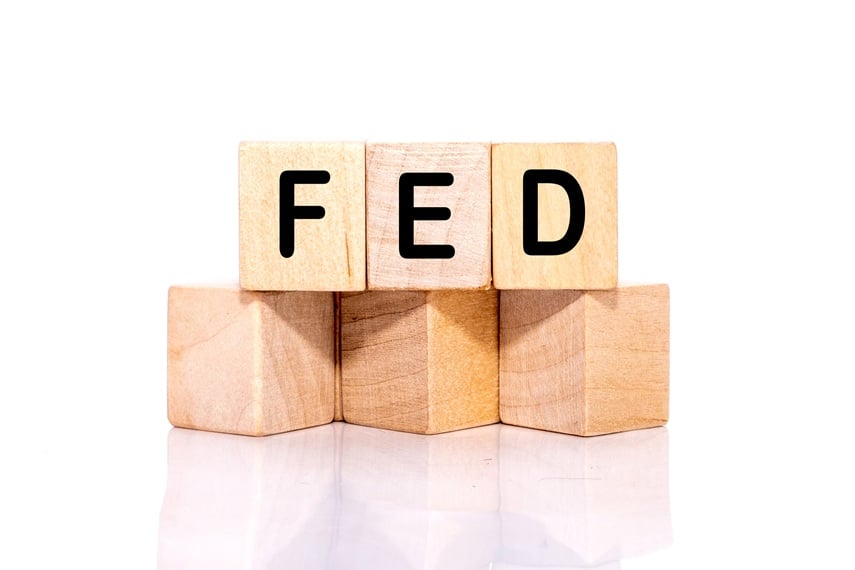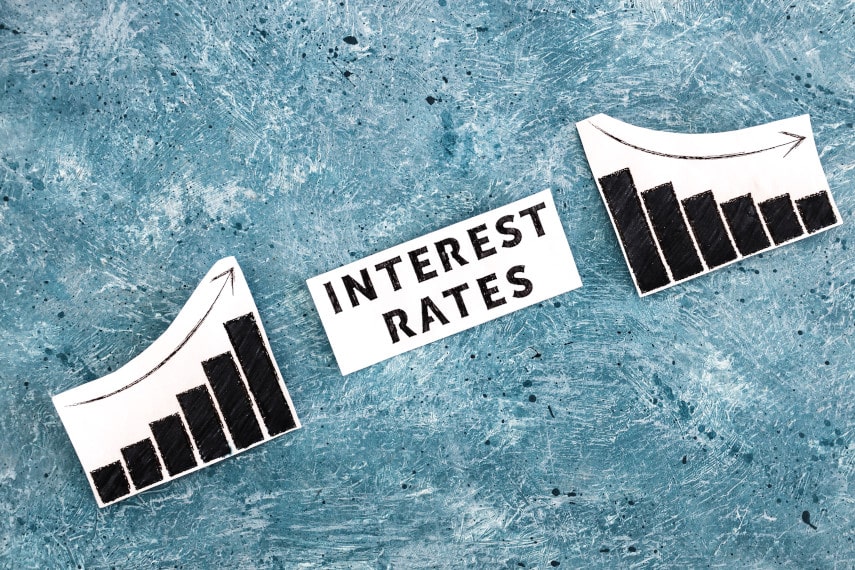
While the Federal Open Market Committee was expected to hold rates steady at last week’s meeting and did so, and while no one expects rates to be cut before June at the earliest, you would think that the fact the Federal Reserve is holding rates steady would have been greeted with a groan from markets.
Instead, markets soared after the Fed’s meeting, with the Dow Jones Industrial Average gaining over 400 points and the S&P 500 gaining over 45. What’s going on?
As the old saying goes, markets can stay irrational longer than you can stay solvent. So even though many of us realize that recession is on the way and we realize that eventually markets should realize that, it isn’t happening yet.
So if you’re thinking that you can make a lot of money shorting markets, it isn’t going to be as easy as it seems. Still, there’s a reason markets are acting the way they are.
Anticipation of Action
Aside from holding rates steady, the Fed last week stuck to its view that it will cut rates three times this year. And that assertion of expected rate cuts was presumably what caused markets to take off after the FOMC meeting.
In other words, markets are still expecting an injection of liquidity to come later this year, and they’re expecting that liquidity to boost markets. But what if it isn’t that easy?
What if the rate cuts and injection of liquidity come because the Fed sees recession imminent?
What if they come because the Fed sees an urgent need to combat an economic slowdown?
What if they come because job losses start to mount and markets start to tank?
Markets right now are acting as though Fed rate cuts are some sort of panacea that is going to bring about strong economic growth and a robust and healthy economy. In reality, however, and looking back to the last few times the Fed cut rates after a hiking cycle, rate cuts normally narrowly precede the onset of recession.
But this belief of markets that Fed rate cuts are going to solve all that ails the economy is seemingly all that’s supporting today’s inflated valuations. And it’s making it difficult to see when all this euphoria will pass.
Every piece of bad news seems to send markets higher. Higher unemployment rate, slowing manufacturing? Then it’s more likely the Fed will cut rates, and markets take off.
But if businesses add jobs, or if manufacturing picks up, that’s a negative now because it delays rate cuts, and so markets drop. It’s a bizarre reversal of what you would expect to happen, but it seems to be the dominant force moving markets today.
Markets and Gold
The other bizarre thing that’s happening is that both gold and stock markets are rising at the same time, with both hitting all-time highs. Normally you would expect that if stock markets are hitting all-time highs, gold might be lagging behind, and vice versa.
But it seems that even gold markets have succumbed to the rate cut expectations. The thinking behind that goes that if rate cuts introduce extra liquidity into the economy, that extra liquidity will help boost the gold price.
There’s also the fact that rate cuts often presage the start of a recession, so the beginning of rate cuts could signal that the economy is unwell, and thus would stimulate gold demand from those looking to protect their wealth against recession-related loss.
Gold demand has remained high ever since 2020, and last year’s bank failures gave safe haven gold buying another large boost. With recession at the back of many people’s minds, safe have buying continues to keep the gold price elevated.
Gold has been a trusted safe haven asset for centuries, protecting wealth against economic turmoil and financial crisis. Gold tends to perform well when markets aren’t doing well, which is one reason it’s a little confusing that gold is doing so well right now when markets seem to be strong too.
During the 2008 financial crisis, the gold price rose by 25% during the same time period that markets fell over 50% (October 2007 to March 2009), and in the aftermath of the crisis gold continued to rise, setting all-time highs through 2011.
In recent years gold has been setting all-time highs again, with gold this year pushing above the $2,200 barrier for the first time. Gold price growth remains steady, and even periodic pullbacks aren’t pushing the gold price that much lower.
If gold is doing this well when markets are doing well too, how much better might gold perform once a recession actually starts? If the 2008-2011 period was a phenomenal bull run for gold, might the next few years be another one too?
With so many different ways to buy gold and take advantage of gold price growth, just about anyone can take advantage of gold’s ability to perform well when times are tough. While direct cash purchases of gold remain popular, one method of buying gold that has become more common is buying gold through a gold IRA.
Gold IRAs operate under the same rules as any other IRA, the only difference being that they own physical gold coins or gold bars. With a gold IRA you can use pre-tax dollars to buy gold, which then accrues gains tax-free, and taxes are only paid when you take a distribution.
A popular method of funding gold IRAs is through a tax-free rollover from an existing 401(k), 403(b), TSP, IRA, or similar account. That allows you to bypass limits on annual IRA contributions and protect existing retirement savings with physical gold.
If you’re worried about the direction the economy is headed and want to protect your assets, now is the time to start thinking about gold. With gold having recently set new all-time highs, many analysts are expecting the gold price to continue climbing over the next few years.
Goldco has helped thousands of customers benefit from owning gold over the last several years, with more than $2 billion in precious metals placements and over 5,000 5-star reviews. Our experienced representatives can answer any questions you have about how a gold IRA works, the gold IRA rollover process, and the gold purchase process.
Don’t let your hard-earned money fall victim to recession and inflation. Call Goldco today to learn more about how gold can help you safeguard your financial future.





